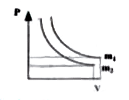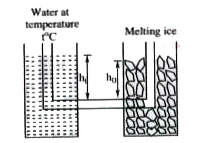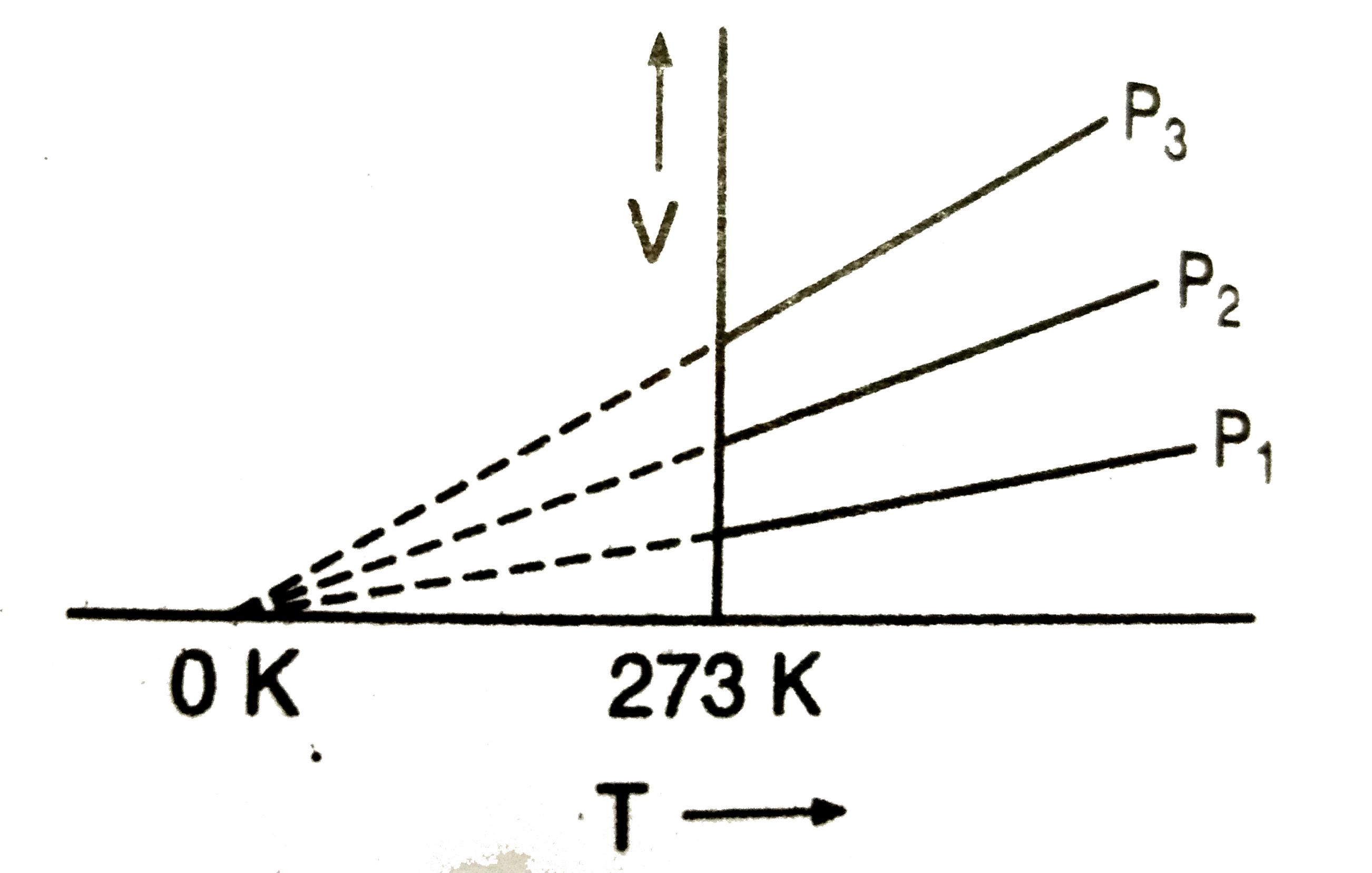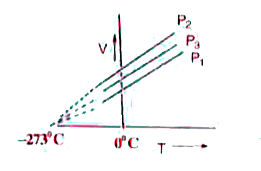Two different at constant. The relationship between volume V and the pressure P at a given temperature of same ideal gas are shown for masses m1andm2 of the gas respectively. Then
 Solution in Telugu
Solution in Telugu
m1>m2
m1=m2
m1<m2
m1=2m2
The correct Answer is:A
Step by step video, text & image solution for Two different at constant. The relationship between volume V and the pressure P at a given temperature of same ideal gas are shown for masses m_1 and m_2 of the gas respectively. Then by Physics experts to help you in doubts & scoring excellent marks in Class 11 exams.
Topper's Solved these Questions
- BOOK - AAKASH SERIESCHAPTER - THERMAL PROPERTIES OF MATTEREXERCISE - EXPANSION OF GASES (LECTURE SHEET) Straight Objective Type Questions (Boyle.s Law - applications)5videos
THERMAL PROPERTIES OF MATTER
- BOOK - AAKASH SERIESCHAPTER - THERMAL PROPERTIES OF MATTEREXERCISE - EXPANSION OF GASES (LECTURE SHEET) Straight Objective Type Questions (Kinetic theory of gases)5videos
THERMAL PROPERTIES OF MATTER
- BOOK - AAKASH SERIESCHAPTER - THERMAL PROPERTIES OF MATTEREXERCISE - EXPANSION OF LIQUIDS (PRACTICE SHEET) LEVEL-II (Integer/Subjective Type Questions)4videos
THERMAL PROPERTIES OF MATTER
- BOOK - AAKASH SERIESCHAPTER - SYSTEM OF PARTICLES AND ROTATIONAL MOTIONEXERCISE - PRACTICE EXERCISE99videos
SYSTEM OF PARTICLES AND ROTATIONAL MOTION
- BOOK - AAKASH SERIESCHAPTER - THERMODYNAMICSEXERCISE - EXERCISE - 333videos
THERMODYNAMICS
Similar Questions
An air bubble comes from the bottom to the surface of a lake of depth 2.5 m. The surface temperature of the lake is 40∘C. The diameter of the bubble at the bottom and at the surface are 3.6 mm and 4 mm respectively. Find the temperature of the lake at the bottom.
01:10View SolutionTwo thermally insulated vessels 1 and 2 are filled with air at temperature (T1,T2), volume (V1,V2) and pressure (P1,P2) respectively. If the valve joining the two vessels is opened, the temperature inside the vessel at equilibrium will be
02:03View SolutionIn figure shown, left arm of a U-tube is immersed in a hot water bath at temperature T, and right arm is immersed in a bath of melting ice, the height of monomeric liquid in respective columns is htandh0. Determine the coefficient of expansion of the liquid
 01:58View Solution
01:58View SolutionThe centre of mass of two particles with masses 2kg and 6 kg located at (1,1,1), (2,2,1) respectively has the coordinates
02:13View SolutionA bullet of mass 10×10−3 moving with a speed of 20ms−1 hits an ice block (0∘C) of 990g kept at rest on a frictionless floor and gets embedded in it. If ice takes 50% of K.E, the amount of ice melted (in grams) approximately is (J=4.2J/cal) (latent heat of ice=80cal/g)
02:12View SolutionThe volume-temperature graphs of a given mass of an ideal gas at constant pressure are shown below. What is the correct order of pressure ?
 02:14View Solution
02:14View SolutionTwo different isotherms representing the relationship between pressure p and volume V at a given temperature of the same ideal gas are shown for masses m_(1) and m_(2) then
02:07View SolutionIf P, V, M, T and R are symbols of pressure, volume, molecular weight, temperature and Gas contstant, what is the equation of density of ideal gas
03:05View Solutionयदि P,V,M,T तथा R क्रमशः दाब, आयतन मोलर द्रव्यमान, ताप तथा गैस स्थिरांक है तो एक आदर्श गैस का घनत्व होगा :
02:38View SolutionEstablish the relationship between temperature pressure and volume of a given mass of a gas.
03:22View SolutionThe volume-temperature graphs of a given mass of an ideal gas at constant pressures are shown below. What is the correct order of pressures?
 03:10View Solution
03:10View SolutionWhich of the following shown the correct relationship between the pressure 'P' and density ρ of an ideal gas at constant temperature?
01:56View SolutionIf P,V,M,T and R are pressure, volume, molar mass, temperature and gas constant respectively, then for an ideal gas, the density is given by ________________.
01:58View SolutionThe volume - temperature graph of a given mass of an ideal gas at respective constant pressure is shown below. What is the CORRECT order of pressure ?
 01:58View Solution
01:58View SolutionTwo different isotherms representing the relationship between pressure p and volume V at a given temperature of the same ideal gas are shown for masses m1 and m2 then
 02:58View Solution
02:58View Solution

